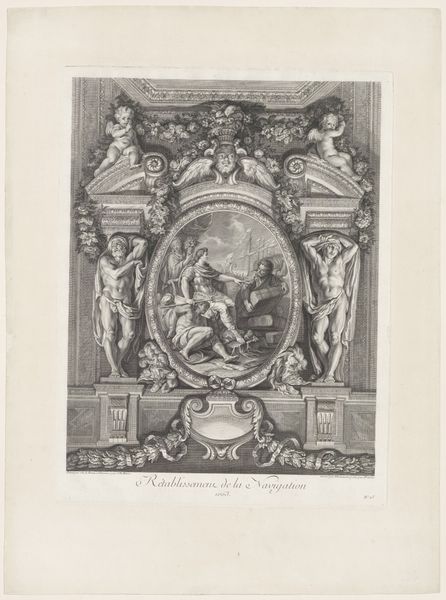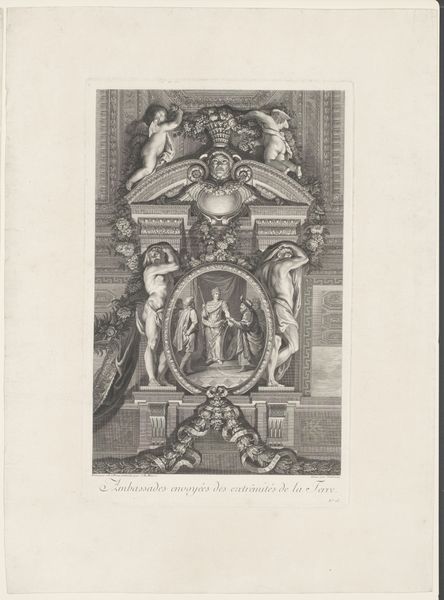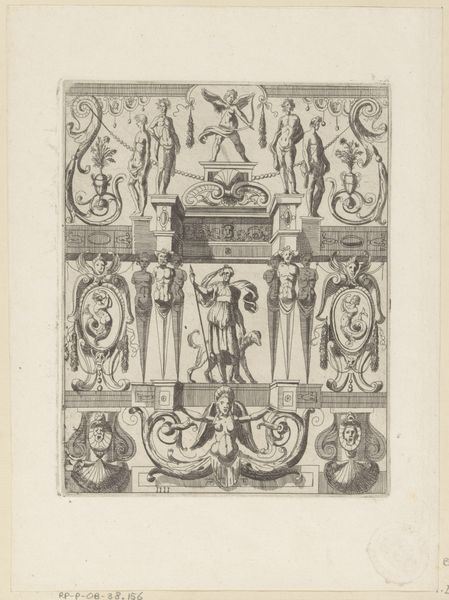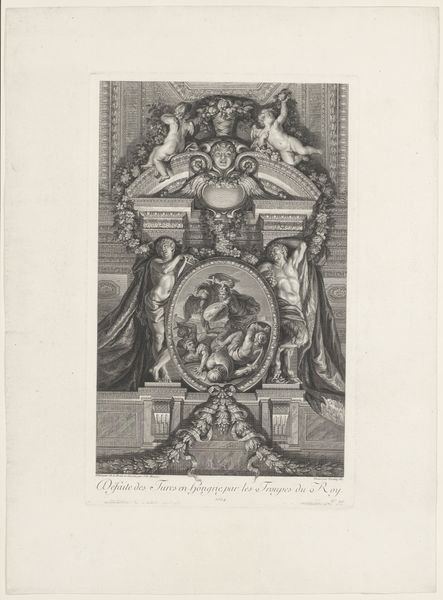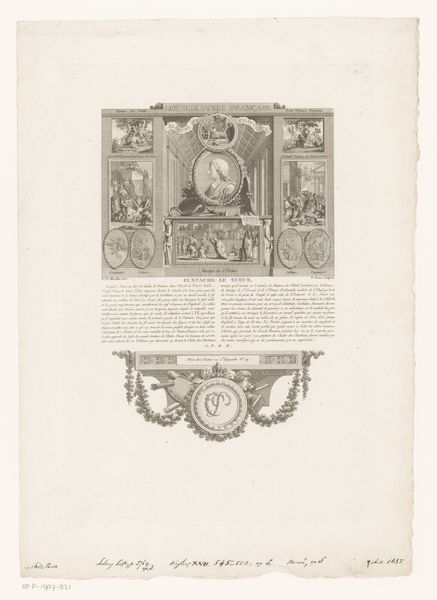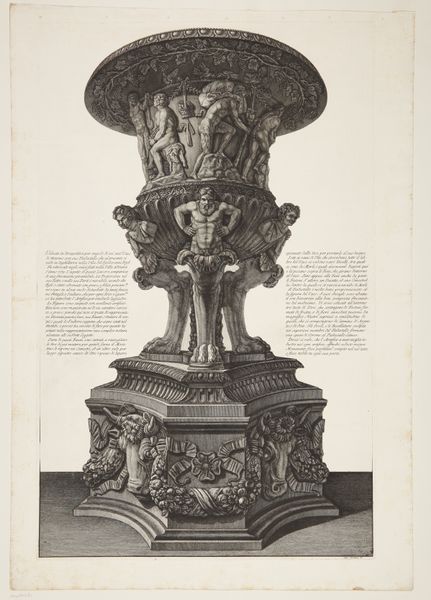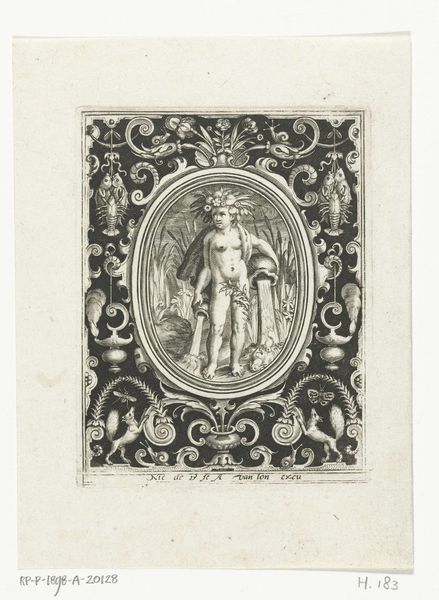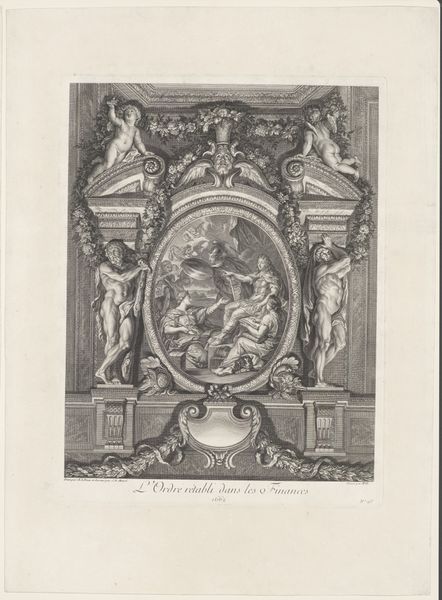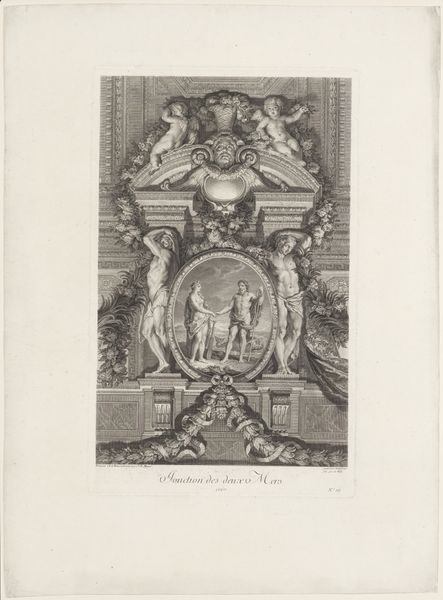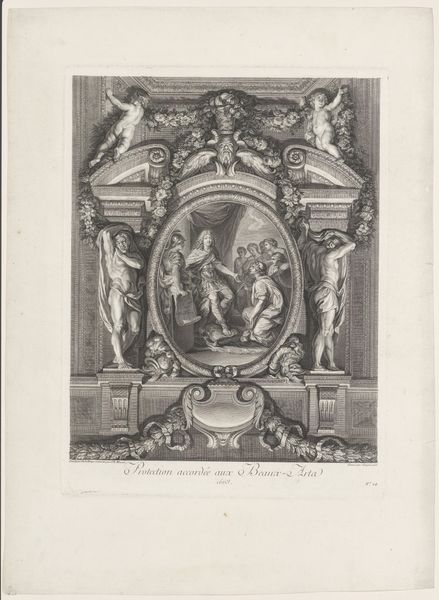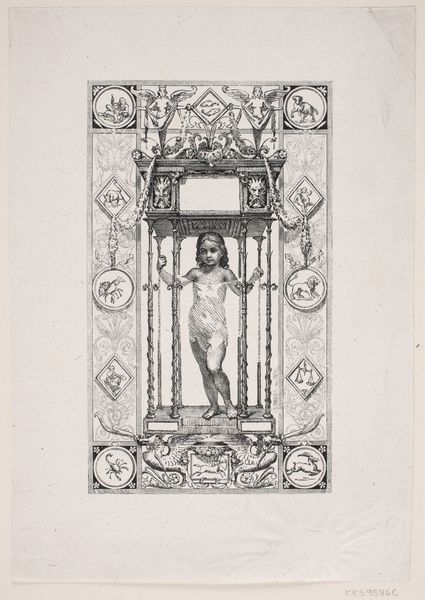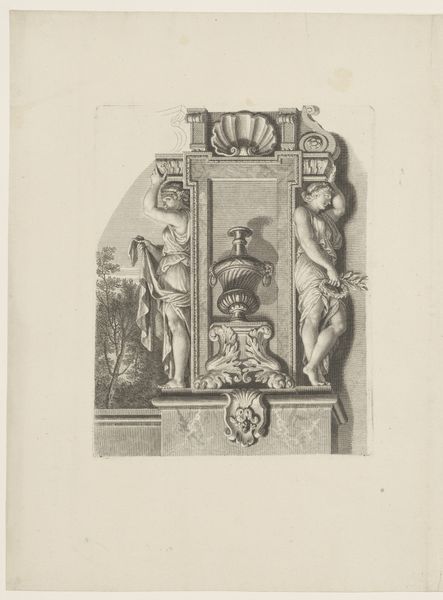
Cinerary urn with inscription flanked by cornucopias and winged genii supporting festoons 1769 - 1778
0:00
0:00
print, engraving
#
neoclacissism
# print
#
figuration
#
geometric
#
line
#
history-painting
#
engraving
Dimensions: 385 mm (height) x 330 mm (width) (plademaal)
This print of a cinerary urn was etched by Giovanni Battista Piranesi in the 1700s, during his time in Rome. Piranesi was known for his detailed and dramatic depictions of Roman architecture and antiquities. In this image, Piranesi presents a lavishly decorated cinerary urn. We can see the cherub, the cornucopias, and the winged genii. These symbolic motifs and the Latin inscription, reflect the neoclassical fascination with ancient Roman culture that swept through Europe at the time. Piranesi wasn’t just documenting history. He was reimagining it. His prints, circulating among collectors and Grand Tourists, fueled a renewed interest in classical forms, influencing architecture and design. Consider the role of institutions like museums and academies in shaping taste and defining cultural heritage during this period. To understand Piranesi’s work fully, we need to explore the social and intellectual currents of 18th-century Europe. Consider the Grand Tour, archaeological discoveries, and the rise of the neoclassical style. These are just some of the threads that can help us unravel the rich tapestry of meaning in Piranesi’s art.
Comments
No comments
Be the first to comment and join the conversation on the ultimate creative platform.
